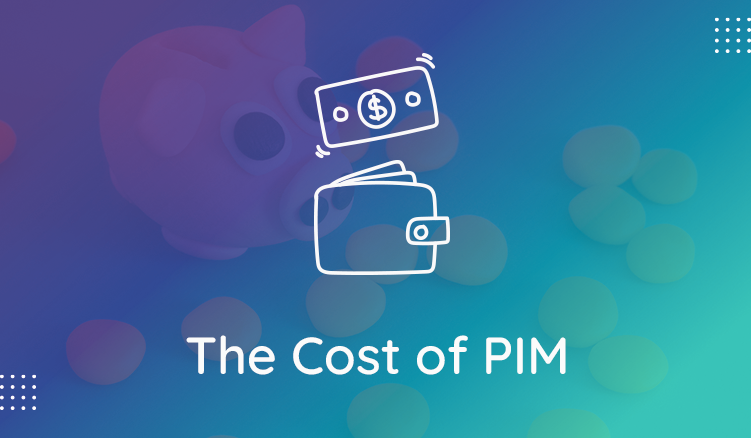We just rolled out our new Plytix Customer Portal where you can give feedback directly and vote on new features. In this Product Spotlight piece, we will show you how it works and explain a bit about why we chose to go this route for our PIM.
How it works
You can access the Customer Portal through the in-tool resource hub located in the top right of the navigation bar.
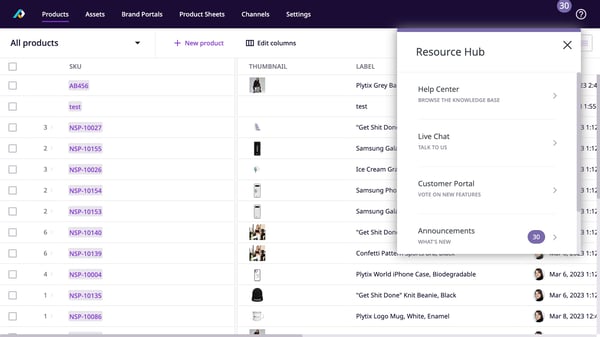
You'll see a new section called FEEDBACK. Here is where you can access the Customer Portal. When you click into the Portal, you will see a few sections:
.jpg?width=600&height=308&name=how-we-process-your-requests-02%20(1).jpg)
COLLECTING FEEDBACK
Here we will put features that we consider candidates for development that we are actively researching. You can help us by voting or providing feedback. Just click on the card you want to contribute to, choose an impact to vote for the feature, then provide extra feedback.
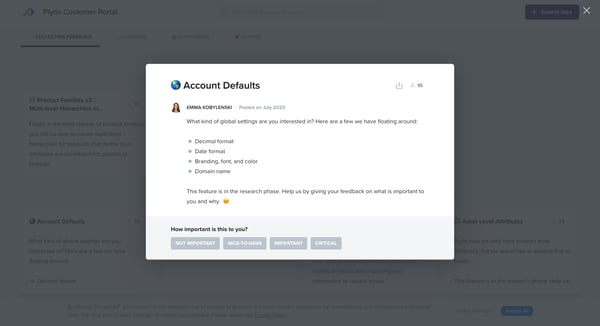
All cards are sorted alphabetically, not by order of importance.
IN PROGRESS
This section has two sub-sections: Actively in Development and Queued for Development.
Those cards sitting in Actively in Development are being worked on by our engineers. Any feedback provided to these cards will be considered for future iterations, as the scope of these projects are closed.
Cards in Queued for Development are features that are coming up next and planned into future sprints. These are also pretty set in stone, however, you can give feedback for future iterations without a problem.
All cards are sorted alphabetically, not by order of release.
SHIPPED
These cards are completed and live for users! You can still leave feedback on these cards if there is something you want to share about your experience with new features.
Tips for Giving Feedback
Our team takes into account the broad voice of our users, plus market research to develop our product roadmap. There are a few things you can do to give us truly valuable feedback that will impact our development process:
- GIVE CONTEXT - Explain a bit of the background to your request or feedback. What processes are you currently using? What specific scenario has sparked your request? Context is the best way for us to understand the impact and usefulness of any piece of feedback we receive.
- EXPLAIN YOUR PAIN - All solutions come from problems. As a product team, we particularly love to focus on problems (which is why no one invites us to parties 🥳). Tell us what is frustrating you about your job, your experience, or the projects and tasks you have. Something might spark our creative juices to solve everything!
- GIVE AN EXAMPLE - This is just another step in helping us understand. The more specific an example, the better. Use cases help us get into the nitty-gritty of the problem and help shape better solutions.
How we process your feedback
Right now, you will see that there are no votes in the portal. This just means that the portal is new, not that no one has given feedback on these items. So when you give us a piece of feedback, it goes into a tool called Productboard. This magical place turns your feedback into raw data for us.
Check out this censored version of what it looks like inside Productboard:
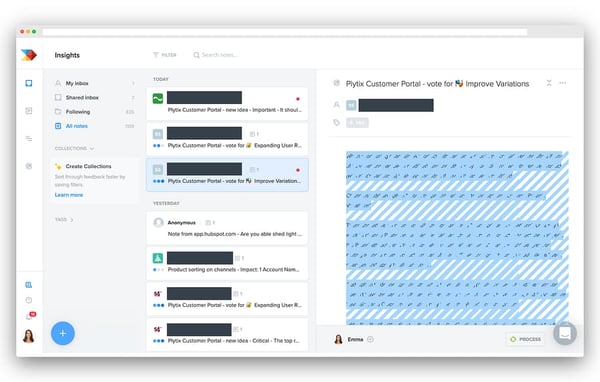
As you can see, we need to read every request in order to process them. This means anything coming through the portal will be individually reviewed, assessed, and sorted. So if you don't think we're seeing your individual requests, we totally are!
Each individual piece of feedback is sorted into its relevant feature idea or improvement. Sometimes a user will simply come with a problem, but we will decide what type of feature or improvement will solve that problem and link the insights to it.
Then we get something that looks like this: 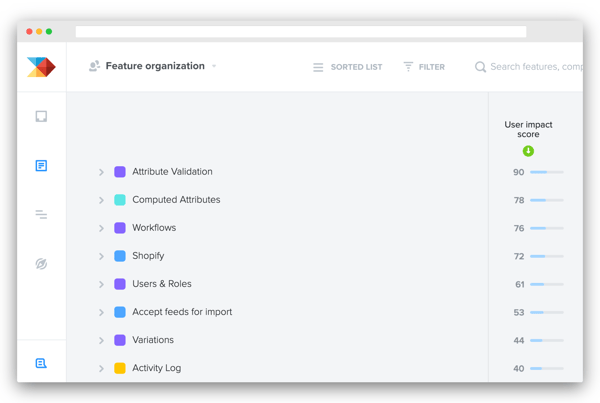
We use things like the "User Impact Score" and other insights to prioritize our roadmap based on the feedback provided.
Just because a feature has more votes than another doesn't automatically mean it will come first. Our roadmap is largely influenced by what our users tell us, but there are also other factors like technological dependencies, market trends, business interest, and user experience that help us make the ultimate decision.
Why we changed our approach
Last year, we drastically changed the way we received and processed feature requests. This change came from an exponential influx of requests and feedback that was turning into an unmanageable mess.
Where we used to get a few requests a week, we are now sitting on over a thousand pieces of feedback. In order to scale our processing without losing our focus on our customers, we decided to get Productboard. Before this change, our users told us that things felt a lot more open and transparent.
But when you switch gears, you will slow down slightly before you speed up again.
Now we are trying to get back to that level of transparency and openness we fostered before with this new Customer Portal.



